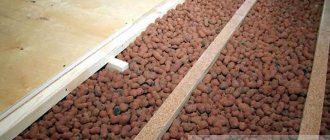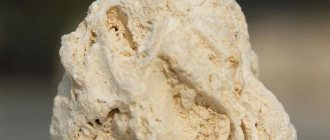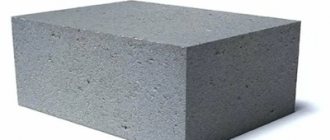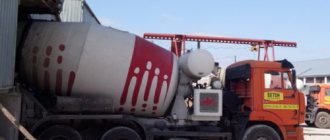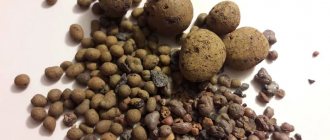To remove dried fragments of the concrete composition, a cement solvent is used. There are several types of products that differ in composition and some other characteristics. Solvents can negatively affect the human body, so when working with them, use protective suits, gloves and respirators.
Solvents are used both for cleaning construction equipment and for removing traces and deposits of cement on building structures.
Cement pollution problem
Excess fresh cement can be removed from the surface with a damp cloth or rags. This is the simplest method. As the solution hardens, it adheres to the base, making it difficult to remove excess concrete.
In this case, use the following methods:
- Mechanical. The composition is cleaned from the surface with a spatula, chisel, scraper or grinder. In this case, there is a risk of damage to the decorative material.
- Chemical.
To remove small fragments of concrete, use citric acid and bath and toilet cleaners.Aggressive substances are not always effective. In addition, they contribute to the fading of some surfaces.
- Professional. Builders use special compounds, under the influence of which the cement dissolves and comes off the surface.
The solvent contains acid and surfactant, which affect the structure of concrete.
What are the problems
No matter how hard the home craftsman tries to be extremely careful when working with cement mortar, several blots still end up on the walls and especially on the floor. None of this matters much when construction work is in full swing. But when carrying out repairs in an already decoratively decorated room, these blunders bring annoying regret.
If you immediately walk over floor tiles or furniture with a damp cloth, not a trace of cement splashes will remain. But a master absorbed in his work may not even notice his sloppiness. But when it comes time to clean, this is where the problem arises. The solution has already hardened and does not want to give in to a wet rag.
As a rule, an amateur construction worker immediately grabs a spatula or hammer. And he tries to either clean off the blot or knock it off the surface. Moreover, his efforts are so great that his efforts easily damage the decorative cladding. And instead of cleaning things up, it ends up causing damage.
More sensible people, at the first failure to remove a cement stain mechanically, immediately stop their attempts. And they begin to think about how to clean the concrete from the surface so as not to damage it. Various folk methods come to mind for many.
Removing a cement stain with a spatula Source ytimg.com
Inquisitive people immediately think of household chemicals. Fortunately, it is always available in every home. For example, a thermonuclear toilet cleaner. But they are not always able to remove the stain. In addition, too aggressive components can also easily damage the facing layer.
A professional always knows what to do in such cases. That’s why he doesn’t bend over to wipe up every drop of solution that falls, so as not to waste time while working. His peace of mind is justified, because when cleaning up traces of his carelessness, an experienced master always uses special means that dissolve any dried cement blot without a trace.
Composition and principle of action of solvents
A cement solvent is a liquid product containing acids, inhibitors and surfactants. The structure of the concrete solution is destroyed due to oxidation. The product gradually penetrates deep into the layer being removed. The material becomes soft, which allows you to remove it with a spatula or brush.
The solvent can be applied to any surface, including metal. The composition includes substances that prevent steel corrosion. The product does not damage wood or tile cladding. It comes in the form of concentrated liquids that are mixed with water.
Making your own solvent
If you need to remove a small coating of concrete from bricks, wallpaper, or fabric materials such as carpets and rugs, you can make a solvent from available liquids; for this you will need:
- water – 3-4 cups (~1 liter);
- acetone – 100 mg;
- glycerin nitrate – a quarter cup;
- table vinegar – 1 drop;
- isopropyl alcohol - 1 tablespoon;
- dishwashing liquid ~250 ml.
Solvents from the store also need to be prepared before use. They are mixed with water according to the instructions: the amount of water depends on the thickness and age of the cement. If the age is up to a month, then a concentration of 1 to 10 is enough; to remove small pieces, dilute in a ratio of 1 to 3; for layers with a thickness of 2 centimeters or more, the concentration of the solution will be one to one.
But it’s better to read the instructions - it says the ratio to a specific solvent.
Characteristics of solvents for concrete
Modern concrete solvents and removers do not harm the material being cleaned.
Most cement solvents have the following characteristics:
- Contains acid. Despite this, the product does not emit substances hazardous to the respiratory system. Liquids can be used in poorly ventilated rooms.
- Do not ignite. The instructions for any product indicate that the product does not contain flammable substances. The use of solvent cannot cause a fire.
- Do not damage the structure of paint and varnish coatings. The compositions contain substances that dissolve cement. They are not dangerous for linoleum, parquet or painted surfaces.
- They do not emit toxic fumes.
- They do not have a harmful effect on the environment. When contacted with soil, the solvent components quickly disintegrate without causing harm to plants.
We recommend
DOCKER ZEMENT — Remover of cement residues (Joint grout). Concentrate . It is used to remove traces of cement, concrete, mortar, efflorescence, residues of joint fillers, and inorganic contaminants. The composition instantly affects contaminants and easily removes them. More details
DOCKER EPOXY (G) — Remover of cement residues (Joint grout). Concentrate . Docker Epoxy (G) epoxy grout cleaner is a gel composition based on special solvents. Used to clean various surfaces from hardened, frozen residues of epoxy compounds. Penetrates deeply into the structure of the epoxy composition, actively softening it. Ready to use product. More details
Popular brands and manufacturers
The rating of popular cement plaque removers includes the following products:
- Lugato ZementschleierEntferner.
Contains amidosulfonic acid, which removes cement splashes from earthenware, chrome, and ceramic surfaces. The solution effectively removes tile adhesive or grout residues. It is not recommended to use the product on acid-sensitive coatings, marble, and terrazzo. The concentrate is supplied in 1 or 5 liter canisters.
- Barracuda 10K.
Concentrated cleaner contains synthetic acid.
It is considered a universal product used for treating glass, ceramic, plastic, wood and metal surfaces.
"Barracuda" effectively cleans cement deposits from concrete mixers, mixers and containers for preparing mortars. The concentrated liquid is sold in cylinders of 1 or 10 liters and barrels with a capacity of 200 liters.
- Prosept Cement Cleaner.
A highly effective product removes cement stains from brickwork and cleans construction tools. The solvent destroys not only concrete, but also salt deposits. Can be used for removing tile grout and cleaning premises after finishing work. The product removes sulfur deposits and soot from the external elements of the building, and cleans molds for filling swimming pools. To remove stubborn stains, use the concentrate undiluted. To clean seams and remove fresh splashes, the liquid is mixed with water.
- Docker Zement.
A concentrated aqueous solution is used to clean any coatings, including decorative ones. It does not contain chlorine, heavy metal salts and other harmful substances, therefore it is considered relatively safe. When applied, the product does not emit an unpleasant odor and dries in 15-20 minutes. Packaged in 5 or 11 liter canisters.
- Mapei Keranet.
An organic acid-based remover is used to remove cement or limescale deposits from both the interior and exterior of a building. The solution can be used to process any type of tile and natural stone. The compositions may adversely affect the condition of acid-sensitive coatings. The solvent is available in the form of powder and emulsion.
- Mite Himfrez.
Suitable for cleaning glass, ceramic and brick substrates. Treatment with this product improves the adhesion of the waterproofing material to the surface. The composition does not contain acetic, hydrochloric or hydrofluoric acid. It is safe for artificial and natural stone. Supplied in 5 and 10 liter canisters.
Instructions for removing dried concrete
All of the above products, like others, have precise instructions on their packaging. It describes in what proportions to dilute the drug with water and how to properly apply it to the surface. These recommendations must be fully followed, as a good manufacturer will indicate ratios for various degrees of contamination.
But we can talk about two basic rules that help deal with hardened cement. It is better to place construction tools and small contaminated products in a container, for example, a bucket, and fill them with active liquid. Leave for a while, and then remove and scrape off the softened mass with a spatula. After this, rinse well with water.
It is better to place a rag moistened with concrete solvent on a blot located on a flat surface. If the contamination is significant in area, simply fill it with a cleaning compound and cover it with a cloth for a while. After such manipulations, the remaining dirt is easily washed off with a stream of water.
Removing cement stains Source gerpespro.ru
For brickwork, you can make your own cleaner. To do this, you need to take hydrochloric or sulfuric acid and dilute it with water in a ratio of 1:10. A homemade product is applied to a damp surface. It is necessary to wait from 15 to 30 minutes, depending on the thickness of the contamination layer.
After this, clean off the softened concrete mechanically and rinse the surface well with water. Then the brickwork must be treated with a water repellent. To protect it from moisture and prevent the appearance of efflorescence.
A homemade concrete cleaner can be made using a different recipe. It comes in handy when cement splashes get on clothes, carpet, upholstery and other fabrics. Since you will need little product, you need to take about 30 grams of glycerin and any detergent. Combine the ingredients with 300 ml of water and mix well.
The homemade preparation is applied to the stain and rubbed in with a toothbrush in a circular motion. This remedy is considered universal. It can be successfully used on any surface when contamination is minor. It is great for eliminating sloppiness when renovating an apartment. So as not to waste money on liter industrial cleaners.
How to remove dried cement mixture?
To wash off dried cement mortar, perform the following steps:
- The room is cleared of construction debris. Surfaces are treated with a vacuum cleaner.
- The selected product is applied to the contaminated areas with a brush, rag or spray. The last option is considered more convenient.
- Leave the surface for the period specified in the instructions.
During this time, the solvent will destroy the structure of the concrete, softening it. - Remains of cement are cleaned off with a spatula or a device that supplies a high-pressure stream of water. If dirt cannot be removed, use a wire brush. If necessary, the solvent is applied and kept again.
The contaminated instrument is immersed in a container with diluted concentrate and left for 15-20 minutes. The softened concrete is removed with a rag. It is recommended to carry out work in a garage or outside.
Areas of use
Cement mortars of plaster or concrete have a high degree of adhesion to all porous surfaces:
- To the brick;
- To the tile;
- To wood;
- To the concrete base;
- To the metal.
It is necessary to remove the stone in different cases:
- Remains of cement spray from the floor after plastering walls and ceilings;
- The solution is used to clean formwork after installing foundations;
- Acids can be used to clean tools after plastering, laying bricks and blocks;
- Old plastered surfaces that could not be removed mechanically.
In addition to concrete and cement stains, solvents can be used to remove lime and cement efflorescence from walls without leaving marks or relapses.






